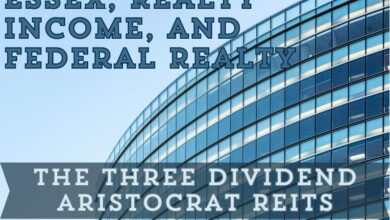Factor Investing: A Simple Guide on How It Works

Overview of Factor Investing
Factor investing has been in vogue because of institutional and retail investor preferences for smart beta investing strategies. The approach selects stocks for investment based on factors or attributes correlated with higher returns. There are two main types of factors: macroeconomic and style factors.
In reality, most investors have been practicing factor investing in some form or another for many years. For instance, ask yourself if you prefer value stocks over momentum stocks or vice-versa. Some people like value, and others prefer momentum stocks. However, both are style factors. You are picking one to enhance your returns and minimize your risk.
From a personal perspective, I practice a type of factor investing because I prefer value stocks but add in some momentum tech stocks, and I tend to emphasize low-volatility equities.
Affiliate
Stock Rover is an award winning investment research platform.
- The site has 8,500+ stocks, 4,000 ETFs, and 40,000 mutual funds.
- Access to 650+ metrics, financial data, market news, stock and fund ratings, fair value, margin of safety, etc.
- Includes brokerage integration, portfolio tracking, rebalancing, watchlists, alerts, future income forecasts, etc.
Click here to try Stock Rover for free (14-day free trial).
History of Factor Investing
Factor investing traces its founding back to the 1960s when the capital asset pricing model (CAPM) theory was introduced in a series of papers. The four critical papers are:
- Lintner, John (1965). “The Valuation of Risk Assets and the Selection of Risky Investments in Stock Portfolios and Capital Budgets.” Review of Economics and Statistics 47: 13–37.
- Mossin, Jan (1966). “Equilibrium in a Capital Asset Market.” Econometrica 34: 768–783.
- Sharpe, William F. (1964). “Capital Asset Prices: A Theory of Market Equilibrium under Conditions of Risk.” Journal of Finance 19: 425–442.
- Treynor, Jack (1961). “Market Value, Time and Risk.” Unpublished manuscript: 95–209.
According to an overview, CAPM theory suggested that stocks were sensitive to the movement of the broader market, measured by beta. As a result, the most crucial factor was the market factor, as measured by beta, to drive the risk and return of equity. The remainder of a specific stock’s return was due to company-specific attributes such as quarterly earnings beats or misses, CEO changes, new products or services, etc.
In further research, a paper by Stephen Ross extended the CAPM theory and suggested that more than one factor can better explain stock returns.
- Ross, Stephen A. (1976). “The Arbitrage Theory of Capital Asset Pricing.” Journal of Economic Theory 13: 341–360
Fama and French
Finally, Nobel laureates Eugene Fama and Kenneth French developed the famed three-factor model in 1992. In developing this model, the authors added the size and value factors to the market risk factor.
- Fama, Eugene F., and Kenneth R. French (1992). “The Cross-Section of Expected Stock Returns.” Journal of Finance 47: 427–465
The primary innovation in the Fama and French Three-Factor Model was that it considers the fact that value and small-cap stocks regularly outperform the broader market. Hence, the Fama and French 3-Factor Model includes the volatility, size, and value factors.
The authors updated their model in 2014 to add two more factors, forming the Fama and French Five-Factor Model. The two additional factors were probability and investment. The probability factor captured the fact that companies reporting higher future earnings have higher returns. In contrast, the investment factor captured the idea that companies directing profit to major growth projects are likely to have underperformance in the stock market.
Types of Factors
Macroeconomic Factors
Macroeconomic factors capture broader fiscal, natural, or geopolitical risks. They are applicable across asset classes and generally affect national economies. Economic growth, unemployment, real interest rates, inflation, credit, emerging markets, and liquidity are macroeconomic factors.
These factors affect the whole or significant part of the stock market. For instance, a fiscal macroeconomic risk is rising interest rates, which tends to adversely impact the revenue and growth of companies. An example of a natural risk is a hurricane that affects a large region of a country. An example of geopolitical risk is a regional conflict limiting trade or market access.
Style Factors
Style factors are risks within asset classes. They include value, momentum, volatility, quality, and market size.
The value factor attempts to capture excess returns from stocks priced low compared to their fundamentals, e.g., a low price-to-earnings (P/E) ratio relative to a trailing average. Investors tend to have an overly optimistic view of expensive stocks and excessively negative views of inexpensive stocks.
The momentum factor accounts for the fact that stocks outperforming in the recent past tend to have strong forward returns. Investors tend to use recent returns to make their investment decisions.
The volatility factor captures research illustrating that low-volatility stocks have greater risk-adjusted returns.
Low debt, stable earnings, consistent cash flow, high margins, and good credit ratings define the quality factor. This fact is often a result of a wide moat or competitive advantage.
The market size factor captures the fact that small-cap stocks have historically outperformed large-cap stocks. Small-cap stocks are riskier and more volatile, and investors expect higher returns.
Is Dividend Growth a Factor?
A dividend growth strategy may or may not be a factor. However, Ned Davis and Hartford Fund’s research suggests that dividend growers tend to have higher returns with lower beta over more extended periods. You can read my discussion about this topic in my article on Why Dividends Matter to Investors.
The main issue, though, is the research is not as rigorous and back-tested as the factors mentioned above. Therefore, if dividend growth is not a factor, then, in my opinion, it is a company-specific driver.
A Factor Investing Approach
Factors are cyclical. Macroeconomic factors may have a long cycle, while style factors may be more short-term. Most factors are not highly correlated. For example, the value and momentum factors are direct opposites.
Momentum stocks outperformed during the dot-com boom, but value stocks outperformed during the dot-com bust. Large-cap stocks outperformed during the dot-com boom, while small-cap stocks outperformed during the dot-com bust. Rapid changes in market direction tend to cause momentum stocks to plunge. Low-quality stocks sometimes perform well, while high-quality stocks muddle along.
Asset managers are offering exchange-traded funds (ETFs) with a focus on factor investing. One can choose different factors when investing in ETFs and build a diversified portfolio with low volatility. But does it work? In theory, yes, as seen by the chart below. However, some research has indicated that costs may eat into returns, eliminating benefits.

Final Thoughts on Factor Investing
Factor investing is increasingly popular, especially for people who follow smart beta strategies. However, factor investing may not be for everyone. Factor investing contradicts the efficient market hypothesis (EMH), which postulates that investors cannot beat the market over time because stock prices immediately reflect all available information.
Nevertheless, a factor investing approach is something to consider since it focuses on maximizing risk-adjusted returns. However, specific factors will underperform for stretches because of economic and market conditions.
Related Articles on Dividend Power
- Bogleheads 3 Fund Portfolio: It’s Simple and Effective
- ETF vs. Index Fund: Which is Best for Your Portfolio?
Here are my recommendations:
Affiliates
- Simply Investing Report & Analysis Platform or the Course can teach you how to invest in stocks. Try it free for 14 days.
- Sure Dividend Newsletter is an excellent resource for DIY dividend growth investors and retirees. Try it free for 7 days.
- Stock Rover is the leading investment research platform with all the fundamental metrics, screens, and analysis tools you need. Try it free for 14 days.
- Portfolio Insight is the newest and most complete portfolio management tool with built-in stock screeners. Try it free for 14 days.
Receive a free e-book, “Become a Better Investor: 5 Fundamental Metrics to Know!” Join thousands of other readers !
*This post contains affiliate links meaning that I earn a commission for any purchases that you make at the Affiliates website through these links. This will not incur additional costs for you. Please read my disclosure for more information.
Prakash Kolli
Prakash Kolli is the founder of the Dividend Power site. He is a self-taught investor, analyst, and writer on dividend growth stocks and financial independence. His writings can be found on Seeking Alpha, InvestorPlace, Business Insider, Nasdaq, TalkMarkets, ValueWalk, The Money Show, Forbes, Yahoo Finance, and leading financial sites. In addition, he is part of the Portfolio Insight and Sure Dividend teams. He was recently in the top 1.0% and 100 (73 out of over 13,450) financial bloggers, as tracked by TipRanks (an independent analyst tracking site) for his articles on Seeking Alpha.




